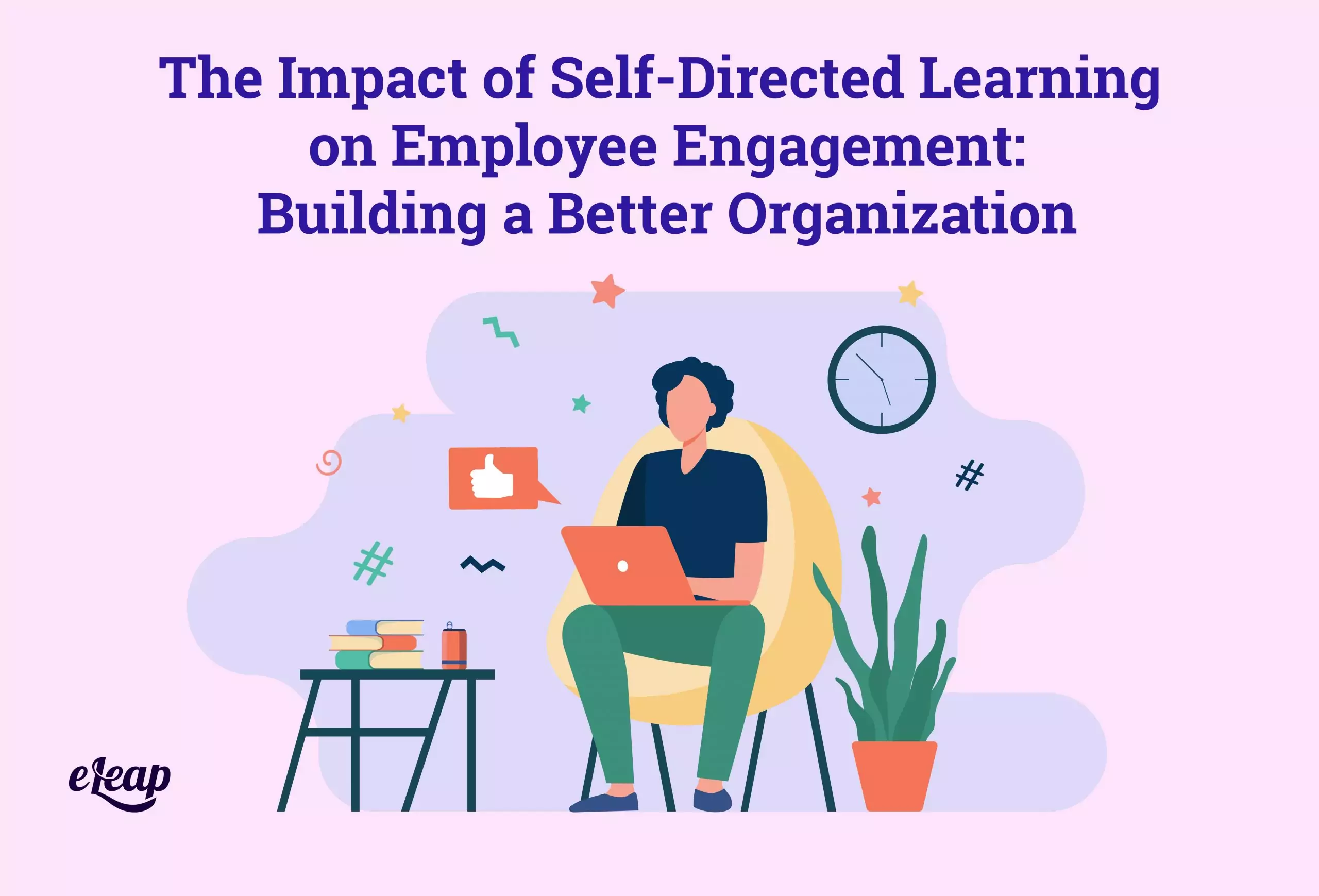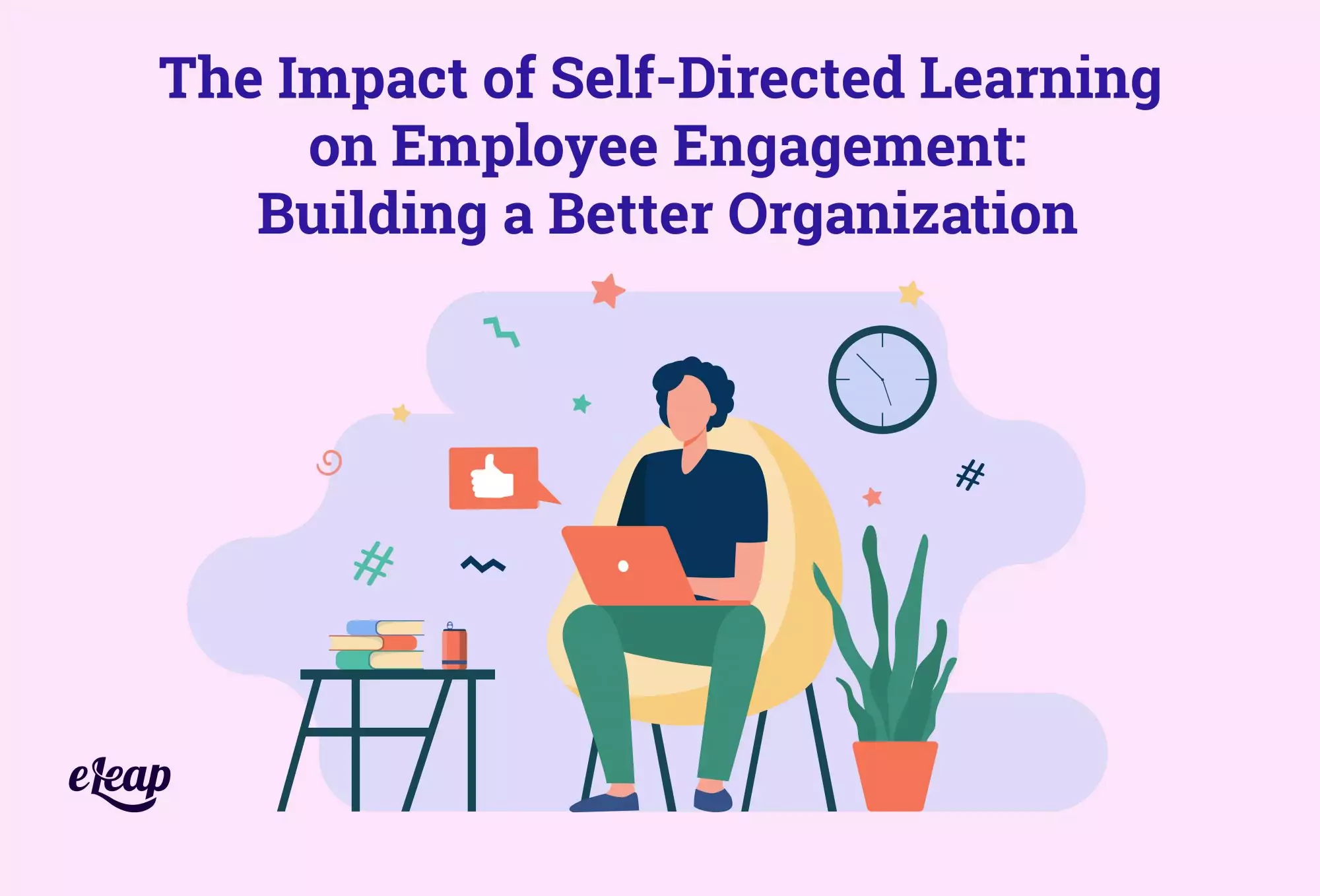The Impact of Self-Directed Learning on Employee Engagement: Building a Better Organization

Most organizations take a similar stance to learning and development. That is, employees follow a structured path forward, marked by pre-defined milestones. It seems like a logical thing to do, and it ostensibly makes it easier to track progress for in-house and compliance needs. For many organizations, self-directed learning is the way to go as it combines autonomy and convenience.
However, forcing learners to follow a synthetic structure for their learning can have negative outcomes. They are less engaged with the material, for one thing. For another, their progress is slower. In most cases, they also retain less information than is ideal.
Is there a solution? Self-directed learning can offer major benefits for your L&D initiatives, and can also bolster employee engagement in key ways.

What Is Self-Directed Learning?
Often abbreviated as SDL, self-directed learning is precisely what it sounds like – an employee taking responsibility for their own progress through the training material. There is a correlation in the world of childhood education, as well, with proven benefits for young learners. Those same benefits apply to adult employees.
Why Is SDL Effective?
One question that many L&D professionals raise is why is SDL effective? It seems to fly in the face of standard education delivery, in which students progress at a pre-set pace as dictated by a curriculum/lesson plan created by a teacher or other leader. Given that, why is SDL effective? There are several reasons, and understanding them is critical to implementing self-directed learning within your organization.
- Control – One reason for SDL’s effectiveness is that it gives learners control over their own development. That is empowering and enables improved outcomes simply because employees feel more autonomous and less tied down with artificial restraints.
- Interest – Self-directed learning allows learners to focus on things that they are most interested in themselves. When real, deep interest is present, learners progress faster, retain more of the information being taught, and are more engaged with the lessons.
- Empowered – Learners who are free to pursue training that meshes with their aptitudes, interests, passions, and goals are empowered. They also pursue more learning with less need for encouragement and are more likely to encourage others in the organization to learn, as well.
Why Does SDL Improve Employee Engagement?
Employee engagement is one of the more nebulous metrics that speak to organization success. If engagement is high, employees are more productive and efficient. They also remain with the organization for much longer periods, dramatically reducing turnover costs, the need to train replacements, and mitigating related problems.
- However, boosting engagement can be very challenging, because few things improve engagement for all employees. Self-directed learning is one of those few – it can improve engagement across the entire organization. Why, though?
- Relevance – One reason for SDL’s ability to increase engagement with your employees is that it offers better relevance in terms of learning content and that content’s intersection with employee needs and goals. It allows employees to focus on what’s most important and most impactful to them at the time. This satisfies a deep need in the human psyche, bolstering engagement, and lifting morale.
- Flexibility – One of the hallmarks of traditional learning is that it is highly structured. Another term that might fit better than “structured” is “rigid”. Learners complete content in a rigid, formulaic way dictated by outside forces. With self-directed learning, your employees get the flexibility they need to fit learning into their work and personal lives.
- Meta-Skills – In a traditional learning scenario, employees learn skills that apply to a specific scenario or are required for an immediate project. However, with SDL, they can master meta-skills that ensure they can approach and solve problems in all areas of their personal and professional life, further empowering them. Check out our over 1500 course titles to enhance meta skills.
- Timely Updates – When employees are forced to follow a rigid training program, they usually cannot update their skills and knowledge in time for real-world constraints. They are forced to move at the pace of the training and development plan, rather than at the pace of real life. With self-directed learning, they can master skills and update their knowledge as necessary, offering what is starting to be known as “just in time learning”.
- Focus for Specializations – While much of your learning and development will be “broad-stroke” stuff that applies to most of your workforce, that’s not the case for everyone. Most organizations have at least a few specialists that require unique training. Self-directed learning can offer more focused learning in those highly specialized fields, offering improved outcomes, and thereby bolstering engagement.
How to Encourage Self-Directed Learning in the Workplace
As you can see, self-directed learning can have a profound impact on engagement, morale, and organizational success. Of course, this still leaves the question of how you can encourage SDL within your organization. While each business will need to take a customized approach, there are a few common factors that apply across the board, including the following:
- Creature a Culture of Learning – One of the first things to consider is your company’s culture. If it does not value learning and development, then you will have a hard time moving forward. On the other hand, a culture that prioritizes learning goes hand in hand with self-directed learning.
- Encourage Employees to Ask Why – The core of self-directed learning is curiosity. Employees who do best with SDL methods are those who cannot stop asking “why”. Encourage that within your organization and support inquiry; you’ll find that SDL follows naturally.
- Get Employees to Set Learning Goals – Finally, encourage your employees to set learning goals. With self-set goals, employees are more motivated to learn and grow, and self-directed learning is a perfect match for self-set goals.
Train and Engage
Improving employee engagement offers dramatic benefits to your entire organization. While achieving improvement can be challenging, self-directed learning offers proven effectiveness. In addition to improving engagement, it also empowers, helps your team members enjoy greater control over their own lives and autonomy, and raises morale across the entire organization. All of those are critical considerations for real, lasting success.